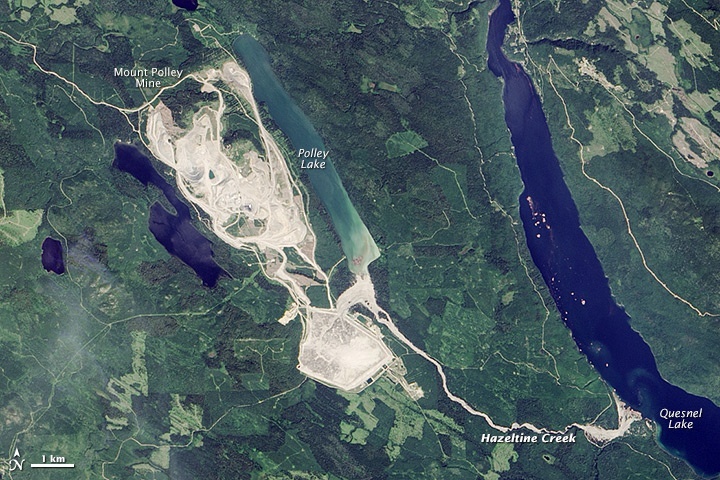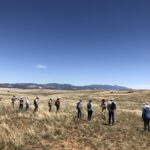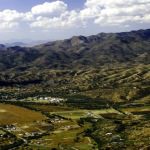EARTHWORKS PRESS RELEASE
Letter from community and enviro groups around the country urges EPA, Forest Service, BLM to respond to lessons of Mount Polley mine disaster findings
A coalition of more than 40 environmental and community groups today sent letters to the U.S.Environmental Protection Agency (EPA), Bureau of Land Management (BLM), and U.S. Forest Service (USFS) urging they take immediate action to investigate threats posed by mine waste dams and impoundments in the United States.
In the wake of the August 2014 Mount Polley mine waste disaster in Canada which released roughly 24.4 million cubic meters of mine waste into the Fraser River watershed, a government-commissioned independent investigative panel determined that current global standard practice for mine waste disposal is fundamentally flawed and that future failures at other mines are simply a matter of time. To date, U.S. regulators have taken no action to assess the risks posed by mines in the U.S.

Aerial view of the earthen dam at Mount Polley Mine in British Columbia that breached on August 4, 2014, sending contaminated water into nearby lakes.
“The most important finding of the Mount Polley investigation is that catastrophic mine waste dam failures can and will happen anywhere, unless we apply the lessons of Mount Polley and act to prevent them,” said Dr. David Chambers, president of the Center for Science in Public Participation. He continued, “Preventing these failures is critical to protecting the public from environmental and financial impacts, since there is no financial surety for catastrophic tailings dam accidents.”
“The best available science now warns that business as usual at modern mines means more mine waste catastrophes. That’s unacceptable,” said Jennifer Krill, Executive Director of Earthworks. “To protect clean water, communities and the environment, we need regulators in the United States to act on the lessons learned from the Mount Polley disaster.”
The government-commissioned, independent investigation into the Mount Polley dam failure concluded that the dam design was at fault, and predicted that an estimated 2 additional tailings dam failures could occur every 10 years in British Columbia if business continues as usual.
There are 839 tailings dams in the United States according the U.S Army Corps of Engineers. Mining companies worldwide use Knight-Piésold, the engineering firm that designed and built the tailings dam that failed at Mount Polley — including at the proposed Pebble copper-gold mine in the watershed of Alaska’s Bristol Bay.
Large tailings dams built to contain mining waste, among the largest structures in the world, must stand in perpetuity. Yet there is no federal agency in the U.S., nor global entity, responsible for oversight of tailings dam safety. The few tailings dam safety and construction requirements that exist were developed from those intended for water retention dams, not for mine tailings dams.
Farther south, the Mount Polley disaster has spurred worries about a proposed silver mine on U.S. Forest Service land only about 7 miles upstream of the tourist town of Patagonia, Arizona.
“Our town’s entire water supply is from groundwater, and the tailings dam would feed into the creek running through the town,” Coordinator Wendy Russell of the Patagonia Area Resource Alliance. “We already have acid leaks from historical mines,” she said. “We don’t need a Mount Polley here.”
FOR MORE INFORMATION
- EPA Letter
- BLM/Forest Service Letter
- The Mount Polley panel report can be viewed here: https://www.mountpolleyreviewpanel.ca/











